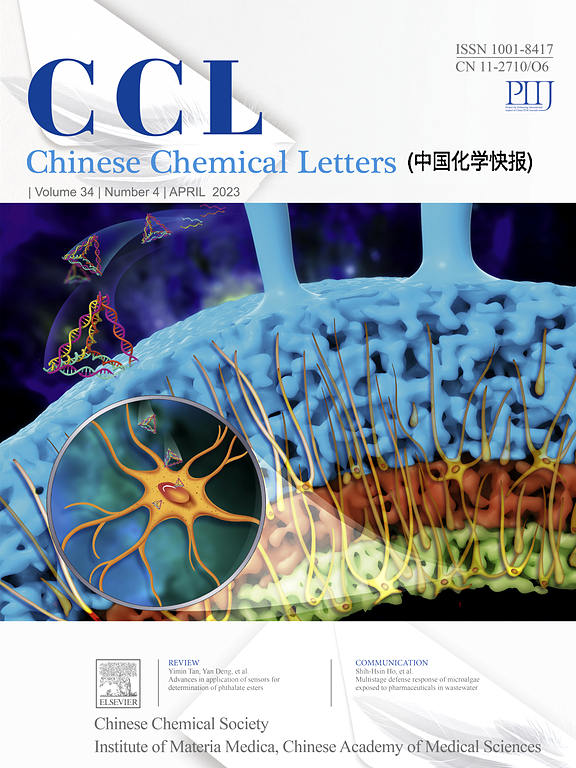Sulfonatoproxylated cucurbit[7]urils as highly water-soluble and biocompatible excipients for solubilizing poorly soluble drugs and improving the bioavailability of indomethacin
IF 9.4
1区 化学
Q1 CHEMISTRY, MULTIDISCIPLINARY
引用次数: 0
Abstract
The ongoing development of small molecule drugs underscores the urgent need for novel excipients to formulate poorly soluble drug candidates. Cucurbit[7]uril (CB[7]) possesses high binding affinities for a variety of molecular guests. However, its moderate water solubility limits broader application. Here we report the synthesis of three CB[7] derivatives M1-M3 by modifying an average of 4.2, 5.5, and 5.9 sulfonatopropoxy groups onto their “equator” carbons. Compared to CB[7], their water-solubility increased by at least 26.6-, 23.6-, and 19.2-fold, respectively, while the maximum tolerated doses (MTD) of M1 and M2 improved by 2.5- and 2.3-fold. Phase solubility diagram studies demonstrate that M1 and M2 significantly enhance the water-solubility of eighteen poorly soluble drugs. In vivo experiments in rat complete Freund's arthritis reveal that M1 not only improves the anti-inflammatory efficacy of indomethacin by up to 52 %, but also substantially reduces its side effect of gastric ulcer.

磺酰基化葫芦可作为高水溶性和生物相容性的赋形剂,用于溶解难溶性药物和提高吲哚美辛的生物利用度
小分子药物的持续发展强调了迫切需要新的赋形剂来配制难溶性候选药物。葫芦bb[7]对多种分子客体具有较高的结合亲和力。但其适度的水溶性限制了其广泛应用。在这里,我们报告了三个CB[7]衍生物M1-M3的合成,通过在它们的“赤道”碳上平均修饰4.2、5.5和5.9个磺基丙氧基。与CB b[7]相比,它们的水溶性分别增加了至少26.6倍、23.6倍和19.2倍,而M1和M2的最大耐受剂量(MTD)分别提高了2.5倍和2.3倍。相溶解度图研究表明,M1和M2显著提高了18种难溶性药物的水溶性。在大鼠完全性弗氏关节炎的体内实验表明,M1不仅能使吲哚美辛的抗炎效果提高高达52% %,而且能大幅度降低其对胃溃疡的副作用。
本文章由计算机程序翻译,如有差异,请以英文原文为准。
求助全文
约1分钟内获得全文
求助全文
来源期刊

Chinese Chemical Letters
化学-化学综合
CiteScore
14.10
自引率
15.40%
发文量
8969
审稿时长
1.6 months
期刊介绍:
Chinese Chemical Letters (CCL) (ISSN 1001-8417) was founded in July 1990. The journal publishes preliminary accounts in the whole field of chemistry, including inorganic chemistry, organic chemistry, analytical chemistry, physical chemistry, polymer chemistry, applied chemistry, etc.Chinese Chemical Letters does not accept articles previously published or scheduled to be published. To verify originality, your article may be checked by the originality detection service CrossCheck.
 求助内容:
求助内容: 应助结果提醒方式:
应助结果提醒方式:


